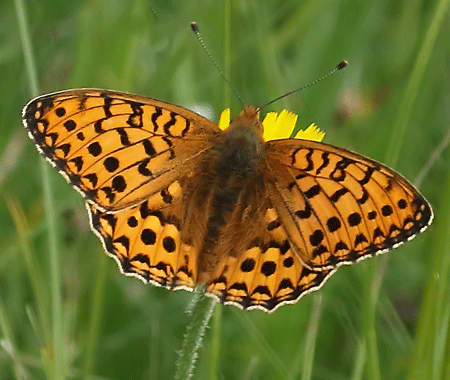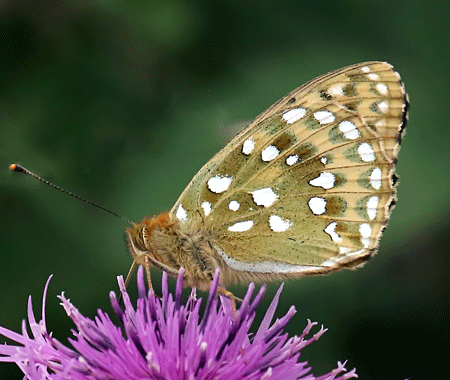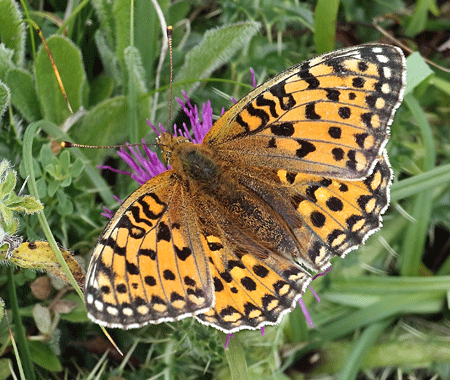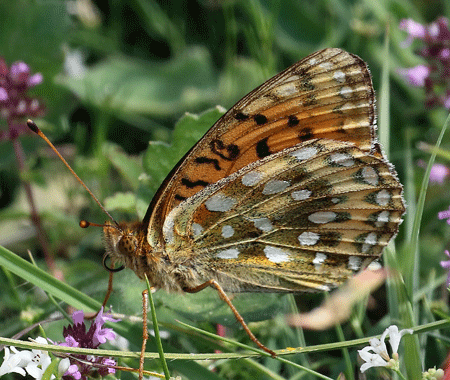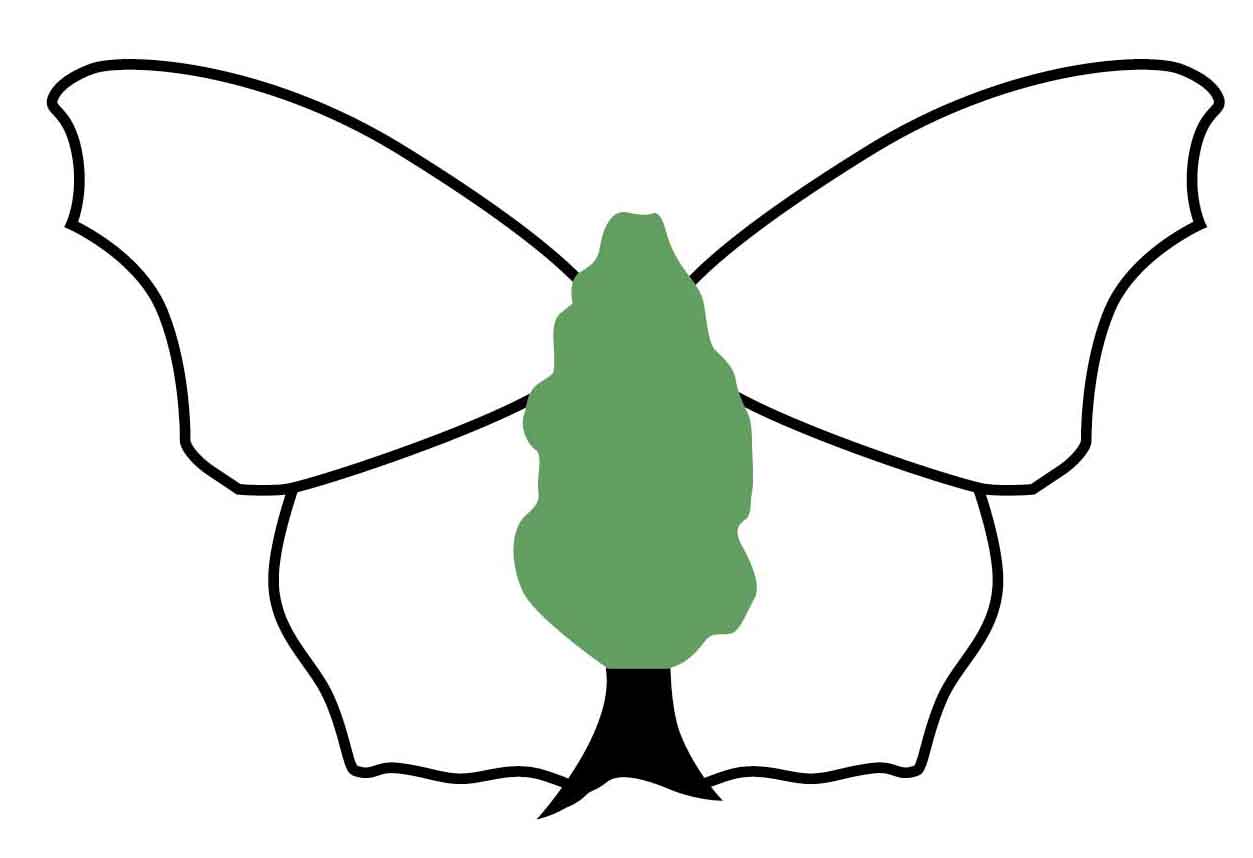 | Butterfly Conservation Saving butterflies, moths and our environment | Upper Thames Branch | 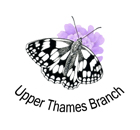 |
Dark Green Fritillary (Argynnis aglaja) | ||||||||||||||||||||||||
| Description | ||||||||||||||||||||||||
| Wing span: 59-69 mm. This large orange and black butterfly makes an impressive sight as it glides over scrubby downland or coastal dunes. The female is larger and paler than the male. It is widespread and common in most of the British Isles. Its habitat is grassy, flowery slopes, clearings in light woodland, damp meadows and heaths. It is most abundant on calcareous soils. | ||||||||||||||||||||||||
| Images (click to enlarge) | ||||||||||||||||||||||||
| ||||||||||||||||||||||||
| Life Cycle | ||||||||||||||||||||||||
| Adults generally emerge in the middle of June, reaching a peak in early July. There is one generation each year. The larva is the overwintering stage. | ||||||||||||||||||||||||
| Larval Foodplants | ||||||||||||||||||||||||
| The primary larval food plants are Common Dog-violet (Viola riviniana), Hairy Violet (Viola hirta) and Marsh Violet (Viola palustris). | ||||||||||||||||||||||||
| Nectar Sources | ||||||||||||||||||||||||
| Adults feed on thistles and knapweeds. | ||||||||||||||||||||||||
| UK Conservation Status | ||||||||||||||||||||||||
| Near Threatened | ||||||||||||||||||||||||
| Earliest UTB first sighting (since 2004) : 28th May | ||||||||||||||||||||||||
| Mean UTB first sighting (since 2004) : 14th June | ||||||||||||||||||||||||
| Species Champion | ||||||||||||||||||||||||
| Rachel Wade Email: dark-green-frit@upperthames-butterflies.upperthames-butterflies.org.uk | ||||||||||||||||||||||||
| Reports | ||||||||||||||||||||||||
| Distribution and Sites | ||||||||||||||||||||||||
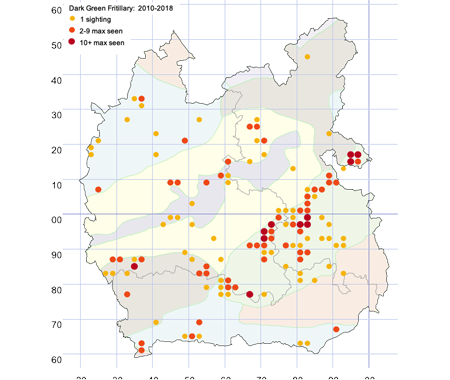 Key |
| |||||||||||||||||||||||
| Related Species | ||||||||||||||||||||||||
| ||||||||||||||||||||||||
Copyright © Butterfly Conservation Upper Thames Branch 2025
Privacy and Copyright Statement
Butterfly Conservation : Company limited by guarantee, registered in England (2206468)
Registered Office: Manor Yard, East Lulworth, Wareham, Dorset, BH20 5QP, Tel: 01929 400 209
Charity registered in England & Wales (254937) and in Scotland (SCO39268)
Privacy and Copyright Statement
Butterfly Conservation : Company limited by guarantee, registered in England (2206468)
Registered Office: Manor Yard, East Lulworth, Wareham, Dorset, BH20 5QP, Tel: 01929 400 209
Charity registered in England & Wales (254937) and in Scotland (SCO39268)

